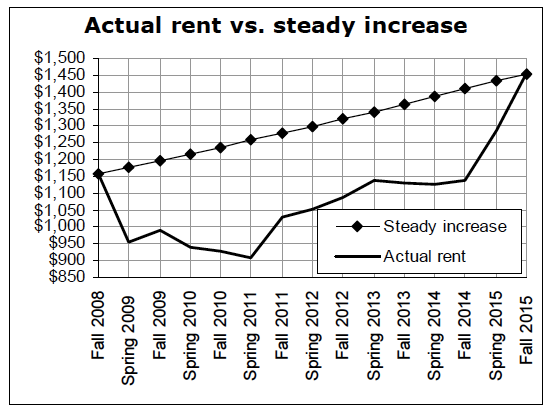Charts and Graphs: More Taxes Mean Higher Rents
Last week I participated in an interview of a landlord about whether it’s a good idea to have a renter’s commission. Tim Burgess is carrying Councilmember Sawant’s water again and proposing just such a thing, a group of renters empowered with City staff and funding to find more and more well intentioned rules to help out renters. It’s yet another terrible idea from the Council and one that has been proposed and will be implemented without any conversation with landlords. None. Burgess took money from landlords and developers to get his job, but now spends his time trying to damage those interests. But what he’s doing won’t help lower rents either, but will likely add to the storm of rules and regulations that limit supply an increase costs. Let’s look at one example we shared last week, the fixed costs of utilities and taxes on rents.
Many of us in Seattle have supported levy after levy to support schools, parks, and housing. Property taxes are not necessarily a bad thing. We all end up paying for them whether we own property or not, and often it’s worth it since many property taxes improve our city broadly and help with job creation by making our city a desirable place to be.
Here’s a couple charts from Mike Scott that illustrate some points we made today:
The chart on the left shows the increase of taxes and utilities versus rent increases. It is a pretty dramatic reality and a point that I’ve made publicly. However, some Councilmembers deny that this is actually happening. During my debate about rent control a couple years back with Councilmember’s Sawant and Licata, Councilmember Licata strait up denied that taxes and utilities were climbing faster than rents. Talk about “fake news.” The truth is that taxes, once imposed, never change, regardless of the economy. That means that rents fluctuate based on supply and demand while taxes are at a set rate and don’t change. Add more of them, and the upward pressure on rents is inevitable.
The second chart, on the right, is how rents “catch up” with the market as Morris mentioned. Some landlords raise their rents based on what the market is doing and their expenses, and this can mean modest increases over time. But lots of owners and operators lag in the increases, trying to hold rents down and remain competitive. They don’t want vacancies and they don’t want to take chances on new tenants.
Put these two charts together and you can see what happens. Operating costs keep going up, the landlords hold off on rent increases, and then have to catch up all at once. Boom. Big rent increase. This is a ironic outcome of landlords AVOIDING smaller, steady increases to keep their tenants happy as more and more and higher costs taxes, fees, regulations, and utilities accumulate. That means bigger boosts in rents. However, landlords are vilified for “skyrocketing” rents when what is pushing the rents is lack of supply, lots of demand, and cost pressures.
So I can imagine Burgess’ renters commission bitterly complaining about landlords and coming up with all sorts of solutions that make no reference to the realities of running an apartment building or what drives costs or decisions to raise rents and imposing fixes that will add up to more costs and higher rents. Rather than collaborating (see my Minneapolis example) Burgess would rather tilt the playing field toward tenants without trying to understand what running a rental business is all about. That just leads to a more profound adversarial relationship. Imagine have a Rental Housing Commission with tenants and landlords that could talk about these issues, learn from each other, and propose solutions that would solve problems rather than boost the fragile egos of members of the Seattle City Council.
Here is the full newsletter from Mike Scott


